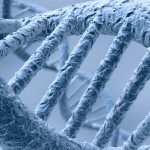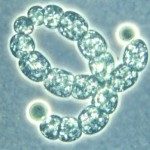Link to Pubmed [PMID] – 19406785
Int. J. Syst. Evol. Microbiol. 2009 May;59(Pt 5):1016-22
Two strains of non-spore-forming, rod-shaped, Gram-positive bacteria, CIP 101303(T) and CIP 102116, were isolated from human blood in 1976 and 1977, respectively. These strains had chemotaxonomic markers that were consistent with classification in the genus Microbacterium, i.e. MK-10, MK-11 and MK-12 as the major menaquinones, predominant iso- and anteiso-branched cellular fatty acids, galactose, mannose and rhamnose as the cell-wall sugars and ornithine as the diamino acid in the cell-wall peptidoglycan. The DNA G+C content was 70-72 mol%. Comparative 16S rRNA gene sequence studies revealed that strains CIP 101303(T) and CIP 102116 belonged to the genus Microbacterium and that they were related closely to Microbacterium halotolerans. The level of DNA-DNA relatedness showed that the two isolates represented a separate genomic species. Based on phenotypic and genotypic results, it is proposed that strains CIP 101303(T) and CIP 102116 be assigned to a novel species, Microbacterium binotii sp. nov. The type strain is CIP 101303(T) (=DSM 19164(T)).





